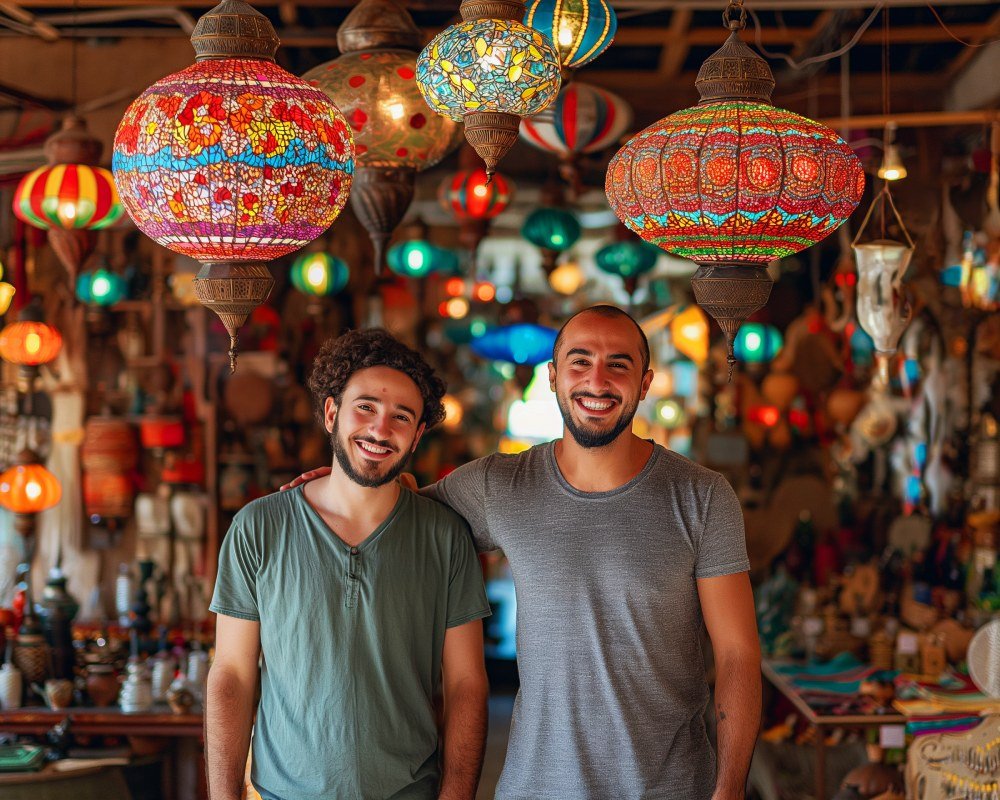
LGBT Rights: A Comprehensive Exploration of Progress, Challenges, and the Global Landscape
1. LGBT Rights – Introduction
The conversation around LGBT Rights has intensified in recent decades, reflecting a broader cultural shift toward recognizing LGBTQ rights as human rights. For centuries, lesbian, gay, bisexual, transgender, and queer (LGBTQ) individuals have fought for dignity, safety, and equal treatment under the law. Despite some landmark victories—such as the legalization of same-sex marriage in multiple countries or the enactment of anti-discrimination statutes in others—bias, violence, and inequality persist. Furthermore, the terminology itself has expanded from LGBT to LGBTQ, LGBTQIA+, and beyond, revealing ever more nuanced understandings of sexual orientation and gender identity.
Why is this topic so crucial? One reason is the ongoing reality that millions of LGBTQ people continue to face harassment, ostracism, and denial of basic rights simply for being who they are. Indeed, some nations still criminalize same-sex relationships, and across all continents, hate crimes against LGBTQ individuals remain alarmingly common. Even in countries with progressive laws, social acceptance lags behind, creating a disjuncture between formal protections and lived experiences.
This blog aims to provide a comprehensive exploration of LGBTQ Rights—their historical underpinnings, the modern advocacy landscape, the philosophical idea that “LGBT Rights Are Human Rights,” and practical resources for those seeking to “Know Your Rights.” We’ll delve into the milestones achieved by the gay rights movement, detail the unique challenges faced by lesbians, bisexual individuals, and transgender people, and address how we might chart a future of genuine equality. Additionally, we’ll feature comparative tables and insights about how LGBTQ rights vary globally—from LGBTQ rights in the United States to international contexts.
Key themes will surface throughout: the role of community organizing, the influence of judicial rulings, the relationship between personal identity and public policy, and the tension between cultural traditions and universal principles of human dignity. By combining historical context with current events, we aim to paint a holistic picture of the LGBTQ rights movement’s evolution, ongoing efforts, and future directions.
While this article is extensive, it’s by no means exhaustive. The issues facing LGBTQ communities are as diverse as the communities themselves, shaped by factors such as race, class, religion, disability, geography, and more. Intersectionality reveals that the struggle for queer rights cannot be separated from broader fights against racism, ableism, misogyny, and other forms of oppression. With this in mind, let us begin our deep dive into a topic that is both deeply personal for many and undeniably global in its impact.
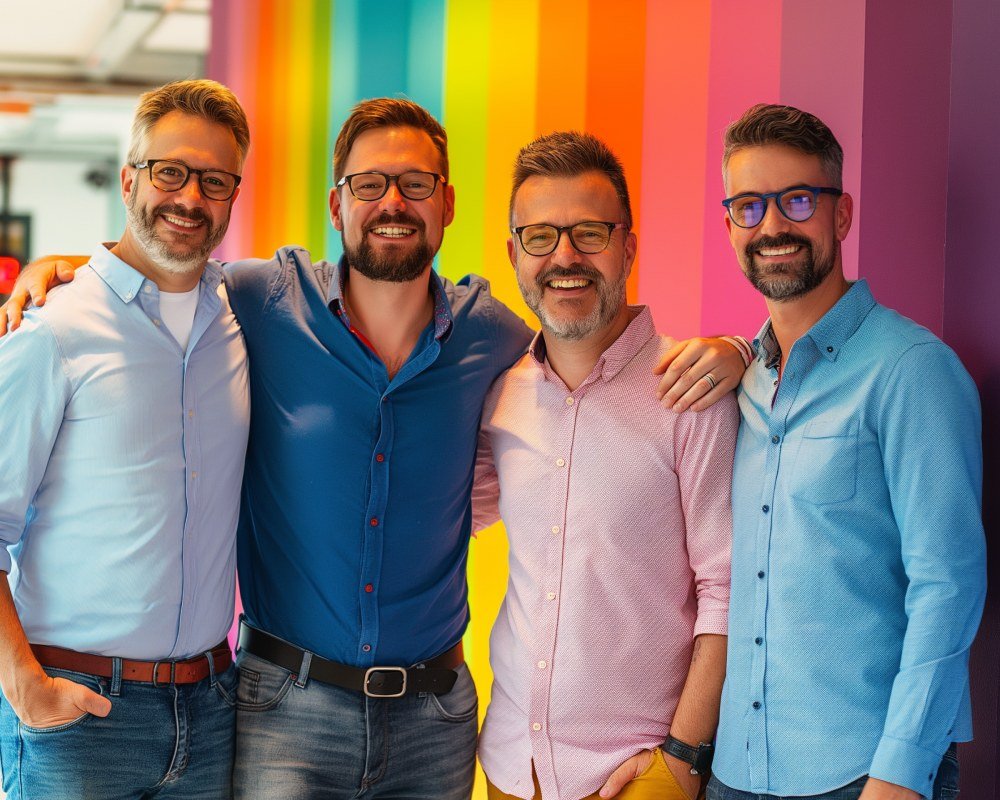
2. Understanding Key Terms: LGBT, LGBTQ, and More
One of the first steps to genuinely engage with LGBTQ rights is grasping the terminology that describes sexual orientation, gender identity, and broader forms of identity expression. Although the acronym “LGBT” (Lesbian, Gay, Bisexual, Transgender) emerged as a more inclusive replacement for “gay and lesbian,” over time it has expanded to include Q for “Queer” or “Questioning,” I for “Intersex,” A for “Asexual,” and an ever-evolving range of other letters.
LGBT vs. LGBTQ vs. LGBTQIA+
- LGBT: Stands for Lesbian, Gay, Bisexual, and Transgender. It was an early iteration that aimed to represent more than just “gay” people by including various sexual orientations and gender identities.
- LGBTQ: Adds “Q,” which can mean “Queer,” a term reclaimed by some as an umbrella identity to challenge norms, or “Questioning,” for individuals exploring their orientation/identity.
- LGBTQIA+: Expands to include “Intersex” and “Asexual/Agender,” among others. The “+” acknowledges that language and identity categories evolve.
Sexual Orientation vs. Gender Identity
- Sexual Orientation: Refers to the gender(s) to which a person is attracted emotionally, romantically, or sexually. Examples include gay, lesbian, bisexual, and heterosexual.
- Gender Identity: A personal sense of one’s own gender, which may or may not align with the sex assigned at birth. Transgender individuals have identities that differ from their birth assignment, whereas cisgender individuals’ identities match.
Reclaimed Terms
- Queer: Historically used as a slur, “queer” has been reclaimed by some as a broad, inclusive label for non-heteronormative and non-cisgender identities. However, not everyone is comfortable with this term due to its painful past.
- Dyke or Femme: In certain lesbian subcultures, words once used pejoratively have been embraced, shaping community-specific identities or styles.
Why Terminology Matters
Accurate, inclusive language promotes understanding and respect. In many regions, people who identify outside heteronormative or cisnormative categories are marginalized partly because society lacks the vocabulary to discuss their experiences. Conversely, having recognized terms fosters visibility—e.g., acknowledging that “bisexual” individuals exist challenges the misconception that people must be either gay or straight. Similarly, proper use of pronouns for transgender or non-binary people can signal acceptance and affirmation.
The Evolution of Language
It’s crucial to note that language around LGBT rights continues to evolve. As societies become more attuned to the complexity of human identity, new terms emerge or shift in meaning. Activists and allies who remain open to adapting their vocabulary demonstrate empathy and understanding, essential values for supporting lesbian rights, gay rights, trans rights, and beyond.
In summary, these acronyms and definitions aren’t just linguistic niceties; they reflect cultural shifts toward recognizing the richness of human diversity. Understanding the terminologies sets the stage for deeper engagement with the issues at hand—both legally and socially.
Advertisement · Scroll to continue
Recommended
3. A Historical Overview of the Gay Rights Movement
The gay rights movement is a broad term encompassing numerous struggles for LGBTQ equality across the globe. While certain societies historically tolerated or even celebrated same-sex relationships and varied gender expressions, widespread persecution and criminalization became entrenched in modern legal codes—often under religious or colonial influences. In the 20th century, political activism began challenging these norms more openly.

Early Mobilizations
- Pre-20th Century: LGBTQ individuals were largely forced into secrecy. Instances of same-sex affection were criminalized across Europe’s legal systems and colonial territories. Despite harsh repression, underground subcultures formed in major cities, from London to Paris to Berlin.
- Mid-20th Century: Post-World War II, increased urbanization and cultural shifts allowed marginalized communities to find each other. In the U.S., police raids on gay bars were common, yet groups like the Mattachine Society (founded in 1950) and Daughters of Bilitis (1955) emerged to advocate for gay and lesbian rights.
The Stonewall Uprising
A pivotal moment came in 1969 with the Stonewall Riots in New York City. Frustrated by continuous police harassment, patrons of the Stonewall Inn—predominantly trans women of color, gay men, and drag queens—resisted arrest in a multi-day confrontation. This act of defiance is credited with sparking the modern gay rights movement, leading to the founding of activist groups like the Gay Liberation Front.
1970s and 1980s
- Visibility and Activism: Pride parades began, forging visibility and solidarity. The American Psychiatric Association removed homosexuality from its list of mental disorders in 1973—a significant symbolic triumph.
- Lesbian Feminism: Parallel to gay male activism, lesbians played a key role in women’s liberation. They formed their own networks to address sexism and homophobia, including establishing feminist presses and music festivals.
- HIV/AIDS Crisis: The 1980s saw the rise of HIV/AIDS, which devastated gay communities. Activist organizations like ACT UP demanded government attention, research funding, and public health strategies, inadvertently mobilizing an entire generation.
1990s to Present
- Legal Milestones: Many countries decriminalized homosexuality, while others introduced anti-discrimination laws. In the U.S., the path to same-sex marriage culminated in the 2015 Supreme Court decision (Obergefell v. Hodges) granting marriage equality nationwide. Similar legal shifts occurred in Canada, parts of Europe, Latin America, and elsewhere.
- Trans Rights Movement: Building on gay and lesbian activism, transgender advocates pressed for recognition of gender identity rights—leading to new legal frameworks for name changes, ID documentation, and anti-trans discrimination measures in some regions.
- Global Disparities: Despite progress, many nations still criminalize same-sex relationships. Violence persists, especially against trans and gender non-conforming individuals.
Today, the gay rights movement has expanded into a broader LGBTQ movement, reflecting an intersectional approach that includes bisexual rights, trans rights, and more. Although Stonewall is often cited as the “beginning,” in truth, activism dates back centuries, with countless unsung heroes championing equality. Understanding this timeline underscores how far we’ve come—and how far remains to be traveled—in achieving LGBTQ rights as a global norm.
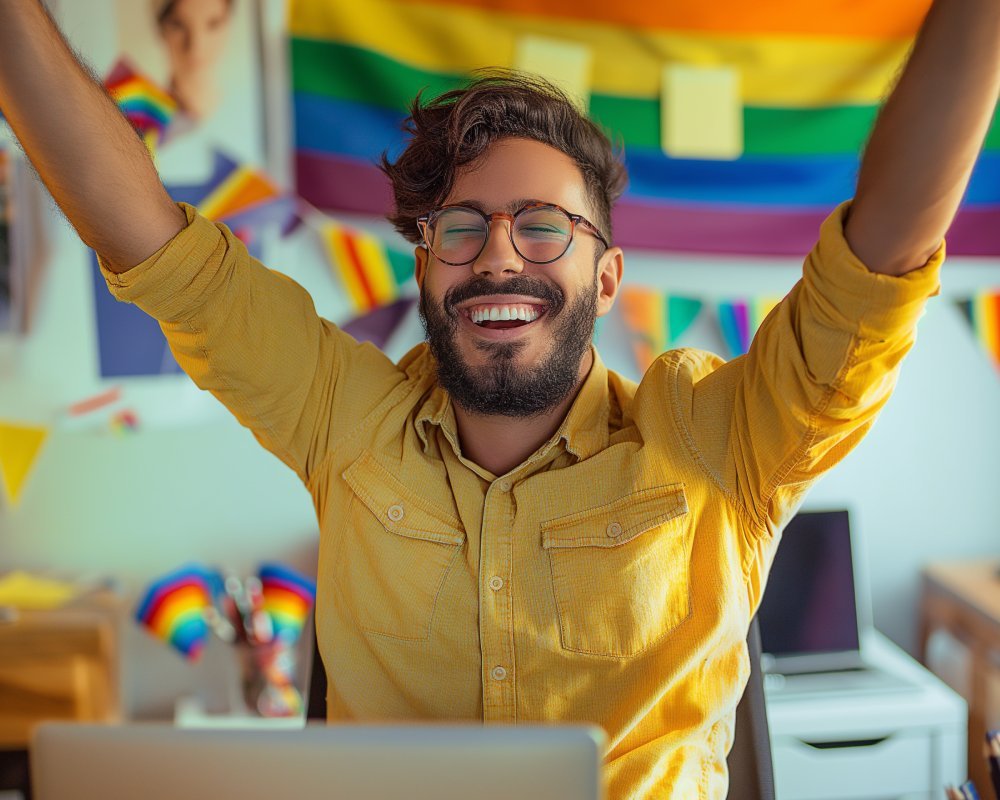
4. Lesbian Rights: Overcoming Invisibility and Striving for Equality
Lesbian rights represent a crucial but sometimes overlooked subset of LGBTQ rights. Historically, lesbians have faced a dual form of discrimination—both as women in patriarchal societies and as individuals attracted to other women, defying cultural assumptions about heterosexual marriage and procreation.
Early Erasure and Invisibility
In many cultures, female-female relationships were deemed invisible or non-threatening compared to male homosexuality. This invisibility had paradoxical effects: some lesbians avoided legal scrutiny, but they also struggled to form acknowledged communities. Historical records often mislabeled same-sex relationships between women as “romantic friendships,” obscuring the depth of their bonds.
Social and Cultural Challenges
- Patriarchy and Compulsory Heterosexuality: Feminist scholar Adrienne Rich introduced the concept of “compulsory heterosexuality,” arguing women are pressured to partner with men. Lesbians subvert that dynamic, challenging male dominance.
- Family and Reproduction Pressures: Societal norms often dictate that womanhood involves marriage to a man and bearing children. Lesbians who reject these roles can face intense familial and communal backlash.
- Religious Doctrines: Many faiths regard same-sex acts as sinful. Lesbian relationships can be dismissed as “less serious” or, conversely, severely condemned depending on cultural context.
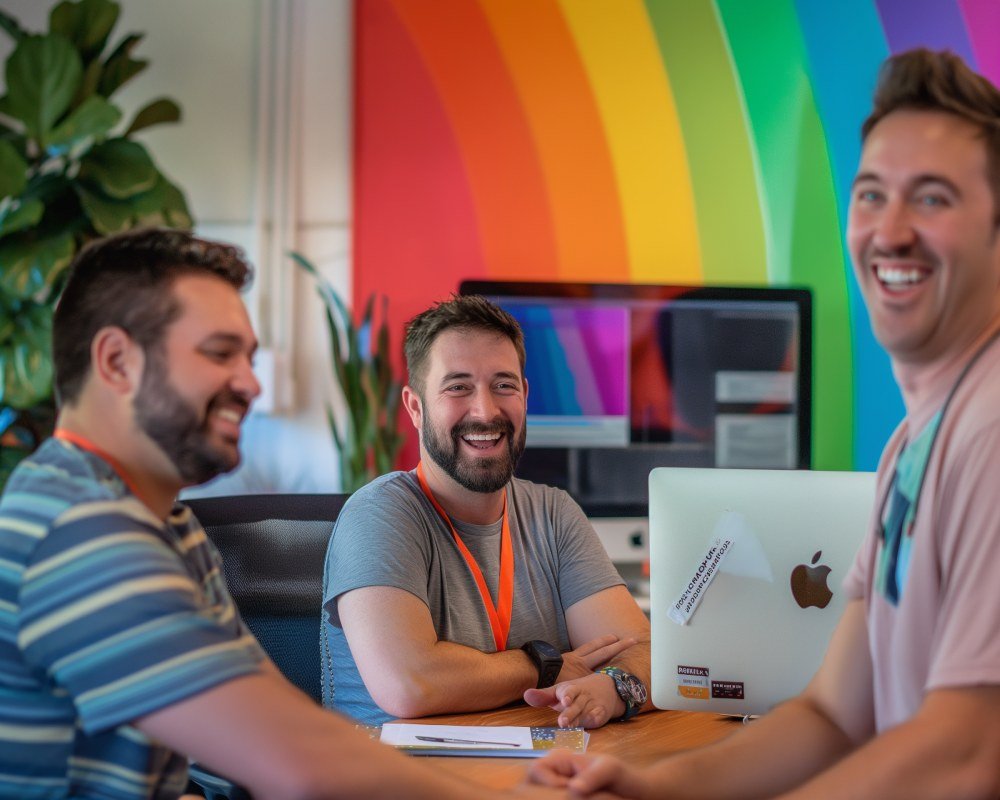
Feminist Movements and Lesbian Visibility
During the second-wave feminist movement of the 1970s, lesbians found spaces within feminist circles to articulate their experiences. However, tension sometimes arose as mainstream feminists hesitated to center lesbian concerns, fearing it would alienate potential supporters. In response, lesbian feminists built their own infrastructures—presses (e.g., Naiad Press), music scenes (the women’s music movement), and social organizations.
Legal and Policy Gains
- Child Custody and Parenting Rights: Lesbians, particularly in custody battles, historically faced the presumption that a lesbian mother was unfit. Over time, court cases and social advocacy have challenged these biases, resulting in the recognition of same-sex couples as adoptive or biological co-parents.
- Marriage Equality: The push for same-sex marriage included prominent lesbian voices. Marriage legalization grants lesbians not only emotional validation but also tangible benefits like inheritance, spousal healthcare coverage, and legal recognition for children.
- Hate Crime Protections: In regions with robust anti-hate legislation, violence targeting lesbians is classified as a hate crime, offering some legal recourse and deterrence.
Ongoing Challenges
- Gender Expression: Lesbians who present more “masculine” (e.g., butch lesbians) are often targeted for harassment, while “femme” lesbians might face erasure of their orientation.
- Intersectional Struggles: Lesbians of color, disabled lesbians, or those from conservative religious backgrounds encounter intersecting discriminations.
- Global Discrepancies: In countries where women’s autonomy is already limited, lesbian rights lag far behind. Criminalization of same-sex acts and forced marriages persist.
In sum, lesbian activism has been pivotal to broader LGBTQ rights efforts, yet unique obstacles remain—stemming from patriarchy, heterosexism, and a historical lack of representation. By amplifying lesbian experiences within the overarching movement, we ensure that these vital perspectives continue to shape policy and cultural transformations worldwide.
5. Bisexual Rights: Erasure, Stigma, and Paths Toward Visibility
Bisexual rights often receive less mainstream attention compared to gay and lesbian issues—despite bisexual people potentially comprising the largest subgroup within the LGBTQ spectrum. Bisexual individuals experience attraction to more than one gender, a reality that challenges rigid dichotomies of heterosexual vs. homosexual. Unfortunately, misconceptions about bisexuality lead to bisexual erasure or the denial that this orientation is valid.
Common Stereotypes and Misunderstandings
- “Phase” Narrative: Many believe bisexuality is merely a transitional phase—especially among adolescents—en route to gay or straight identity. This invalidates stable, long-term bisexual experiences.
- Promiscuity or Confusion: Some portray bisexuals as “greedy,” “confused,” or incapable of monogamy, unfairly linking bisexuality to infidelity.
- Double Discrimination: Bisexuals may face homophobia from broader society and suspicion from lesbian/gay communities, who might label them as not “really” queer.
Impact of Erasure
- Health Disparities: Research indicates bisexual individuals have distinct mental health challenges, partly due to invalidation. Isolation can exacerbate depression and anxiety.
- Data Gaps: Official statistics often lump bisexuals with gay/lesbian respondents, masking unique issues faced by bisexual populations in policy-making or resource allocation.
- Relationship Challenges: Bisexuals in relationships with different-gender partners can lose recognition within LGBTQ spaces, while those with same-gender partners face judgment from family or friends who expected heterosexuality.
Cultural Shifts and Visibility
- Bisexual Advocacy: Organizations like BiNet USA or national/regional bi networks create supportive networks, run awareness campaigns, and lobby for inclusive policies.
- Media Representation: While representation remains limited, celebrities (e.g., Sara Ramirez, Halsey) have come out as bisexual or pansexual, challenging stereotypes. Cultural phenomena like #BiVisibilityDay highlight the unique experiences of bi+ individuals.
- Inclusive Language: Terms like “pansexual” or “queer” also expand conversations about attraction beyond the binary. Some prefer “bisexual” to emphasize attraction to multiple (not necessarily just two) genders.
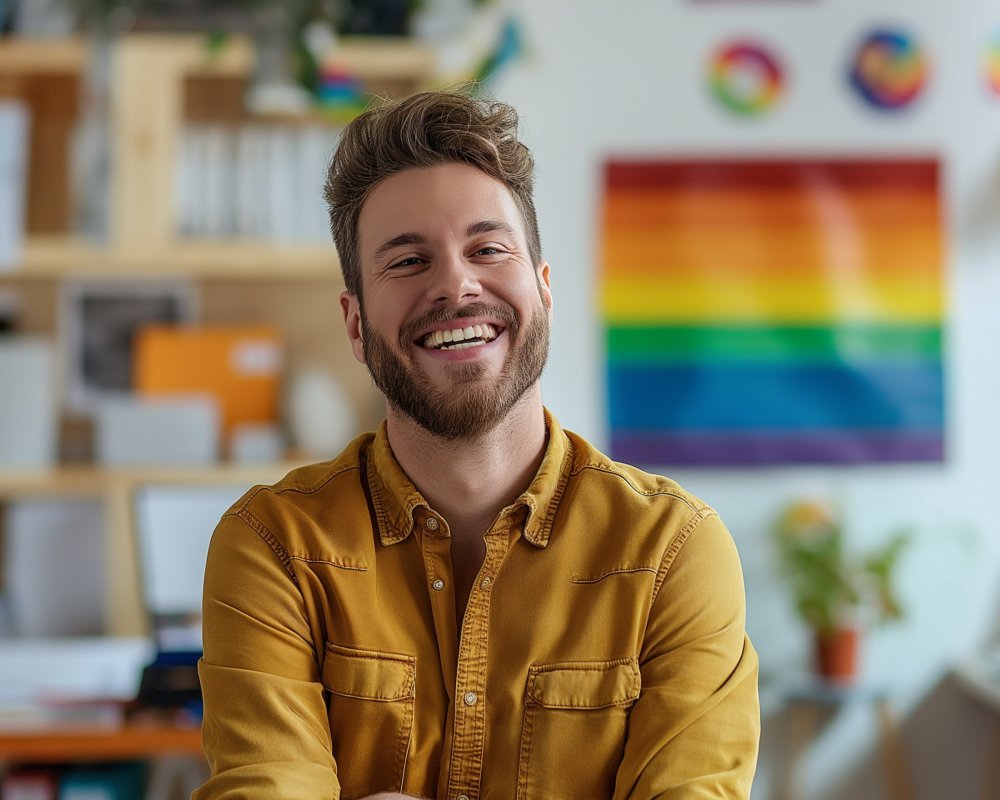
Legal and Policy Context
In many jurisdictions, gay rights legislation covers bisexuals by default. However, the absence of specific programs or awareness campaigns can leave them underserved. For example, public health initiatives might overlook bisexual men’s unique experiences or fail to account for the stigma they face. Anti-discrimination statutes rarely mention bisexuality explicitly, even though they should, in principle, protect all non-heterosexual orientations.
The Path Forward
Addressing bisexual erasure requires dedicated effort across multiple fronts:
- Research and Data Collection: Polls and studies that disaggregate bisexual experiences can inform policy solutions.
- Education and Training: Schools, workplaces, and healthcare providers need to include bisexual perspectives in their diversity initiatives.
- Community Bridge-Building: Fostering unity within the broader LGBTQ movement ensures bisexual voices aren’t marginalized or overshadowed.
Ultimately, bisexual rights demand not just legal protections but also a cultural shift that recognizes the legitimacy of bisexual identity. By including and validating bisexual experiences, the broader LGBTQ rights movement affirms that sexual orientation isn’t always a strict dichotomy, opening more nuanced conversations about love, identity, and freedom.
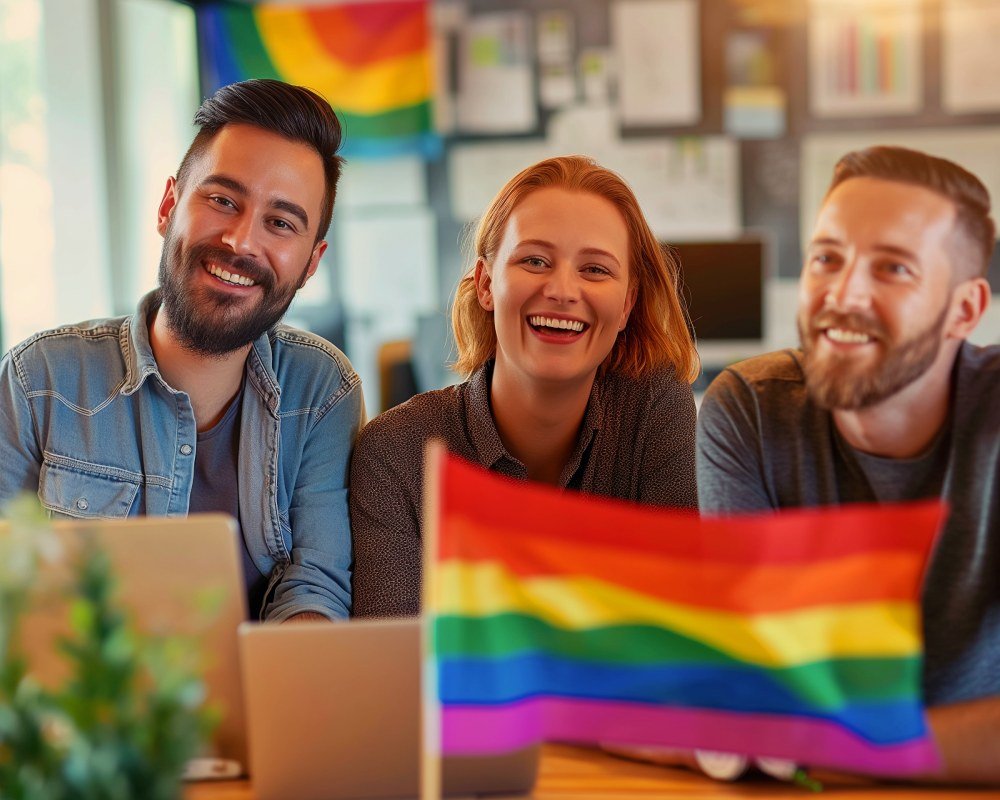
Advertisement · Scroll to continue
Recommended
6. Trans Rights: Gender Identity, Legal Recognition, and Societal Acceptance
Trans rights focus on the rights and well-being of individuals whose gender identity differs from the sex they were assigned at birth. Transgender people have long been part of human societies, often revered in some traditional cultures (e.g., two-spirit individuals in certain Native American communities, hijras in South Asia) yet marginalized under colonial and modern frameworks. Today, trans activism forms a vital arm of the broader LGBTQ rights movement.
Core Issues for Trans Communities
- Legal Recognition: Being able to change gender markers on identification documents is paramount. Lack of correct documents can hinder employment, housing, and everyday tasks like banking or traveling.
- Healthcare Accessibility: Trans-specific healthcare, including hormone therapy and gender-affirming surgeries, remains costly or inaccessible in many regions. Medical professionals may lack training in trans health, exacerbating discrimination.
- Violence and Discrimination: Trans people, particularly trans women of color, face staggeringly high rates of hate crimes. Societal stigma fosters environments where physical assault, homelessness, and underemployment become commonplace.
- Bathroom Bills: Debates over bathroom access have emerged in some countries, often driven by unfounded fears that trans individuals pose a threat to cisgender people. These “bills” can effectively bar trans persons from public spaces if passed.
Legal Milestones
- Gender Identity Laws: Some countries (e.g., Argentina) have enacted progressive “self-ID” laws allowing individuals to change their legal gender without invasive medical or psychological evaluations.
- Non-Binary Recognition: Regions like Canada, Malta, and parts of the U.S. have introduced “X” or “other” markers on IDs, validating non-binary identities.
- Court Precedents: In places like India, the Supreme Court recognized transgender people as a third gender (2014), mandating governmental support. However, enforcement lags behind.
Healthcare Reform and Protocols
Leading medical bodies, such as WPATH (World Professional Association for Transgender Health), provide guidelines on trans-affirming care. Yet, barriers—cost, insurance coverage gaps, lack of culturally competent providers—persist. Mental health support is crucial, given the stress trans individuals face from societal rejection.
Social Acceptance and Cultural Shifts
In recent years, trans visibility in mainstream media—stars like Laverne Cox or Elliot Page—has grown. Activists emphasize that acceptance must go beyond representation: policies in schools, workplaces, and healthcare settings must affirm trans identities. Educational materials addressing gender diversity can reduce bullying and suicide rates among trans youth.
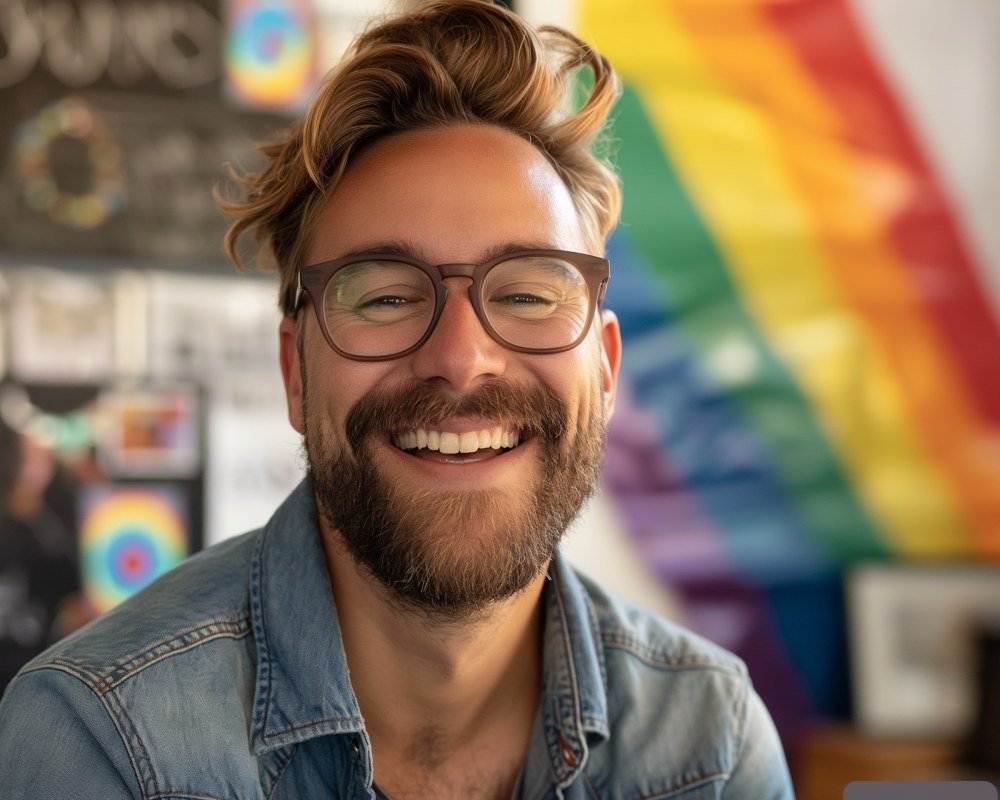
The Ongoing Struggle
Despite progress, trans rights remain hotly contested. Political figures may use trans identities as a wedge issue, championing “bathroom bans” or restricting trans participation in sports. Such moves not only marginalize trans people further but also stoke hostility. Intersectionality also looms large: trans people of color, disabled trans individuals, or those living in rural communities face compounded barriers.
Fundamentally, trans rights are about recognizing that gender identity is a core aspect of selfhood, deserving the same legal and social respect as any other. As we build broader LGBTQ rights, ensuring that trans perspectives shape policies and programs is essential to achieving true inclusivity.
7. Queer Rights: The Fluidity of Identity and Reclaiming Language
“Queer” is a complex term that historically functioned as a slur aimed at those deviating from heteronormativity. Yet it has also been reclaimed by many in the LGBTQ community to articulate a sense of identity or political stance that transcends rigid categorizations. Queer rights thus highlights both a critique of traditional labels (gay, lesbian, bisexual, transgender) and a broader push for inclusive, intersectional activism.
The Reclamation of “Queer”
- Political and Academic Context: In the 1990s, “queer theory” emerged in academia, challenging the idea that gender and sexuality are stable, binary constructs. This theoretical lens explores how society enforces norms around “man/woman” and “straight/gay.”
- Umbrella Identity: Many adopt “queer” because it doesn’t tie them to a specific orientation or identity. Queer can denote fluid or evolving attractions, a rejection of normative gender roles, or a radical stance on activism.
- Controversies: Not everyone welcomes the term “queer,” especially older LGBTQ individuals who recall it solely as an insult. Tensions occasionally surface when well-meaning youth label others “queer” without consent.
Queer as a Political Statement
Referring to oneself as “queer” can signal opposition to assimilationist trends, like those who see the gay rights movement primarily seeking acceptance within existing social structures (e.g., marriage, military service). Queer activism sometimes prioritizes dismantling oppressive systems rather than achieving inclusion. This can overlap with activism against racism, capitalism, or patriarchy—reflecting a commitment to broader social change.
Challenges to Queer Identities
- Erasure or Misunderstanding: People outside or within the LGBTQ community may conflate “queer” with “gay,” missing its broader significance or fluid connotations.
- Cultural Differences: In some regions, “queer” never evolved beyond hate speech. Advocates must tread carefully, respecting local contexts where the term remains deeply hurtful.
- Generational Gaps: Younger activists frequently embrace “queer” as a proud identity, while older generations may find it triggering. Dialogue is essential to balance reclaimed usage with sensitivity to past traumas.
Queer Rights in Practice
Laws generally don’t distinguish “queer” as a separate legal category. Instead, queer individuals rely on broad LGBTQ rights protections, anti-discrimination statutes, and hate crime legislation. However, from a social standpoint, queer communities often form distinct spaces—collectives, academic conferences, art shows—that emphasize fluidity and intersectionality. These spaces can serve as incubators for progressive activism, challenging normative assumptions around everything from relationships to body politics.
The Ongoing Evolution
As language evolves, more people are adopting “queer” to define their sense of self or worldview. This underscores the dynamic nature of sexual and gender identities. Whether or not someone personally identifies as queer, it’s undeniable that the concept fosters vital conversations about inclusivity, the limitations of labels, and the pursuit of a society where LGBT rights form part of a broader liberation movement.
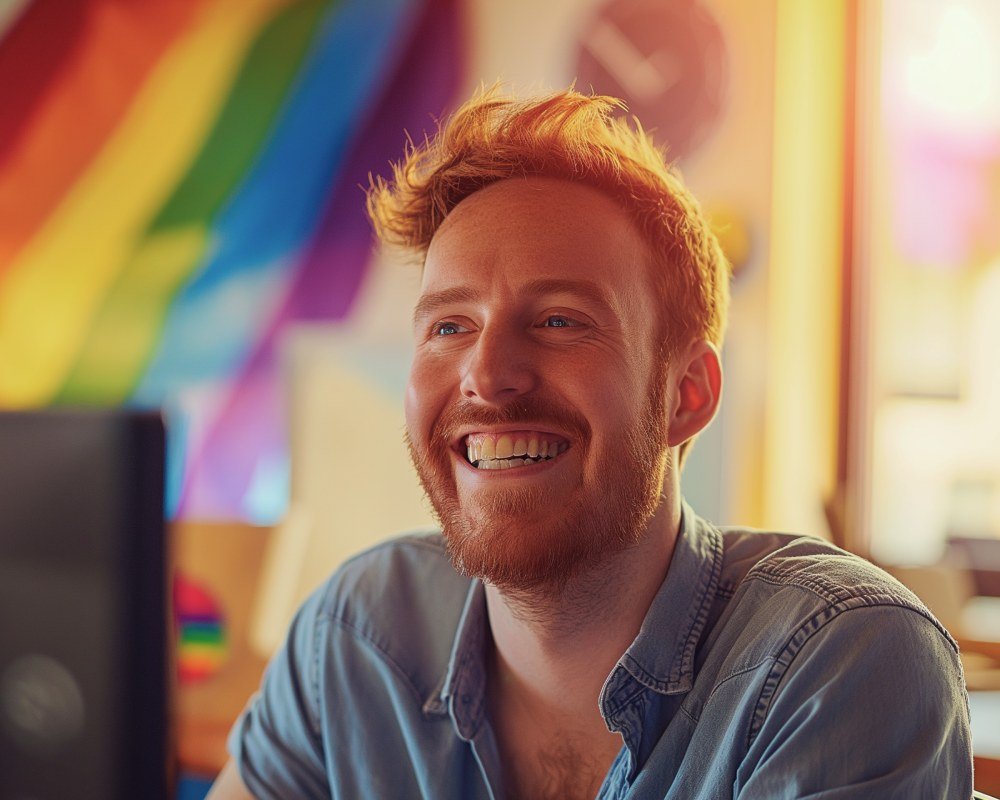
8. Comparative Table: Key LGBTQ+ Terminologies and Their Meanings
Below is a comparative table outlining some of the most commonly referenced LGBTQ+ terminologies, their definitions, and notable considerations. This can help readers quickly discern differences and similarities:
| Term | Definition | Notes/Considerations |
|---|---|---|
| Lesbian | A woman attracted romantically, emotionally, or sexually to other women. | Historically, lesbian identity has been obscured by societal expectations of heterosexual marriage. |
| Gay | Often refers to a man attracted to men; can also be used as an umbrella term for all same-gender attracted individuals. | The gay rights movement is sometimes criticized for overshadowing lesbian, bi, trans issues. |
| Bisexual | A person attracted to two or more genders. | Faces erasure within both heterosexual and LGBTQ circles, prompting specific bisexual rights activism. |
| Transgender | An umbrella term for individuals whose gender identity differs from their sex assigned at birth. | Trans rights involve legal recognition, healthcare access, and protection from hate crimes. |
| Queer | Reclaimed term encompassing diverse orientations/genders, also a political stance rejecting normative categories. | Not universally accepted; can be generationally or culturally sensitive. |
| Intersex | A person born with physical or genetic traits that do not fit typical definitions of male/female bodies. | Intersex activism intersects with LGBTQ advocacy yet has distinct medical and legal issues (e.g., non-consensual surgeries). |
| Non-Binary | Individuals who do not identify exclusively as male or female. | Sometimes legally recognized under “X” markers on IDs; challenges binary gender norms. |
| Asexual | A person who does not experience sexual attraction (or experiences very little). | Can still experience romantic attraction; part of the asexual or “ace” spectrum. |
| Pansexual | Attracted to individuals regardless of gender identity; often described as attraction to “all” genders. | Overlaps with bisexuality, but emphasizes openness beyond gender binary. |
| Genderqueer | Identifying outside traditional binary notions of male/female, often mixing or rejecting normative presentations. | Similar to “non-binary” in some contexts, though definitions vary by individual preference. |

Importance of Terminological Clarity
Understanding these distinctions not only fosters respect but also aids in Protecting the Rights of Lesbian, Gay, Bisexual individuals and others who fall under the broader “LGBTQ+” umbrella. For instance, trans-specific healthcare needs differ from those of cisgender gay men, while bisexual people face unique forms of stigma (e.g., accusations of indecisiveness). Legal frameworks generally group these identities together under “LGBTQ rights,” but tailored policies are often necessary to address unique challenges.
Evolving Language
It’s important to remember that language evolves over time. What’s valid today may shift or gain new nuances tomorrow. Hence, continuing education, self-reflection, and dialogue within the community remain vital components of advocacy, activism, and allyship.
9. LGBTQ Rights Are Human Rights: Philosophical and Legal Foundations
The statement “LGBTQ rights are human rights” underscores a fundamental principle: that sexual orientation and gender identity are innate aspects of personhood, entitling individuals to the same dignity, liberty, and protections as any other. This framework gained traction after decades—centuries, even—of legal persecution and social ostracism aimed at LGBTQ people. Increasingly, international bodies, governments, and NGOs invoke human rights discourse to advocate for equality.
Philosophical Underpinnings
- Universalism: Human rights theories generally hold that rights are intrinsic to all humans, irrespective of race, religion, gender, or orientation.
- Autonomy and Bodily Integrity: The right to bodily autonomy implies one can form consensual relationships without state intrusion. Sexual orientation and gender identity revolve around intimate self-determination.
- Equality and Non-Discrimination: A bedrock principle in liberal democratic traditions is that no group should be singled out for unfavorable treatment.
International Instruments
- Universal Declaration of Human Rights (UDHR, 1948): Though not originally specifying sexual orientation or gender identity, Article 1 states “all human beings are born free and equal in dignity and rights.” Modern interpretations often extend this to include LGBTQ individuals.
- Yogyakarta Principles (2006): This non-binding document explicitly applies international human rights law to sexual orientation and gender identity, guiding many policy reforms worldwide.
- UN Statements and Resolutions: The United Nations has increasingly condemned violence and discrimination based on orientation/identity. While formal global consensus remains elusive, numerous UN agencies support inclusive policies.
Legal and Policy Outcomes
When a country recognizes “LGBTQ rights as human rights,” it typically enacts or strengthens:
- Anti-Discrimination Statutes: Prohibiting discrimination in employment, housing, education, and public services.
- Decriminalization of Same-Sex Acts: Repealing sodomy laws or penal codes that target same-sex relationships.
- Recognition of Same-Sex Partnerships: From civil unions to full marriage equality, acknowledging that love and domestic arrangements transcend gender boundaries.
- Transgender Legal Protections: Facilitating legal gender changes, banning forced medical interventions, and safeguarding trans individuals from violence or workplace bias.
Critiques and Ongoing Debates
Some argue that using a Western-based human rights paradigm might overshadow local cultural nuances or overshadow the complexities of intersectionality (i.e., race, class, and other forms of oppression). Others worry about “homonationalism,” where certain governments champion limited gay rights to appear progressive while maintaining discrimination against migrants or other marginalized groups. Nonetheless, framing LGBTQ equality as a human rights issue has propelled critical changes worldwide, providing a moral and legal vocabulary for campaigns.

The Future
As more activists, governments, and international bodies declare LGBTQ rights are human rights, the scope of protections will likely widen. However, backlash is equally evident—some regimes cite sovereignty or “traditional values” to resist these developments. Balancing respect for cultural diversity with universal principles of dignity, non-discrimination, and liberty remains one of the 21st century’s greatest human rights challenges.

10. Know Your Rights | LGBTQ Rights: Navigating Protections and Challenges
Individuals seeking to “Know Your Rights” often need a clear roadmap through a patchwork of laws, policies, and societal norms. While progress has expanded in some places, others face a daunting landscape where even basic expressions of identity can be criminalized. Below are key areas where LGBTQ rights typically come into play:
1. Workplace Discrimination
- Legal Protections: In many countries, employers cannot fire or refuse to hire someone solely due to their sexual orientation or gender identity.
- Practical Steps: If faced with harassment, individuals might file complaints with human rights commissions, labor boards, or equality tribunals. Documentation of incidents (emails, witness statements) is crucial.
2. Housing and Public Accommodations
- Rental Agreements: Where anti-discrimination laws exist, landlords cannot evict a tenant for being LGBTQ. Some localities lack these protections, requiring a careful reading of municipal or state statutes.
- Service Denials: Restaurants, shops, and other businesses typically cannot refuse service based on orientation/identity, although religious exemption laws complicate this in some jurisdictions.
3. Family and Relationship Recognition
- Marriage and Civil Partnerships: Nations differ widely; some permit full marriage equality, while others offer civil unions, and still more ban same-sex unions entirely.
- Adoption and Parenting: LGBTQ couples may have the right to adopt or foster children. However, agencies sometimes discriminate if laws aren’t explicit. Legal challenges often involve ensuring both parents are recognized on birth certificates.
4. Healthcare and Insurance
- Gender-Affirming Treatments: Trans individuals often need hormone therapy, surgeries, or counseling. Access may hinge on whether insurance covers these or if a region’s public healthcare system recognizes them as medically necessary.
- Patient Rights: LGBTQ patients have the right to respectful treatment without discrimination. Filing complaints against biased medical providers is possible in areas with robust anti-discrimination rules.
5. Education and School Environments
- Anti-Bullying Policies: Many schools have guidelines protecting LGBTQ students. Know your district or institutional policies regarding harassment and safe spaces.
- Sexual Education: The inclusion of LGBTQ topics in curricula varies, but more progressive districts ensure that health classes address same-sex relationships and trans healthcare.

6. Legal Defense and Hate Crimes
- Hate Crime Legislation: Attacks motivated by homophobia or transphobia may carry enhanced penalties in some jurisdictions. Victims should report incidents to local authorities or advocacy groups specializing in LGBTQ legal support.
- Freedom of Speech and Assembly: Protesting or organizing Pride events is generally protected under freedom of assembly laws, though restrictions may arise in conservative regions.
Empowering Yourself and Community
Organizations like the ACLU in the U.S. or Stonewall in the U.K. provide resources and hotlines. Finding local LGBTQ community centers is often the first step in obtaining specialized legal advice or mental health support. Knowledge truly is power—understanding local laws and global human rights frameworks helps individuals advocate for themselves and others.
11. Protecting the Rights of Lesbian, Gay, Bisexual: Legal Mechanisms and Enforcement
Efforts at protecting the rights of lesbian, gay, bisexual individuals have centered on legislation, judicial rulings, and the creation of enforcement bodies. While legal frameworks differ widely by country, certain mechanisms recur as pillars of LGBTQ rights protection.
Anti-Discrimination Statutes
Laws that explicitly prohibit discrimination based on sexual orientation are key. This ensures that lesbians, gay men, and bisexuals have recourse if fired, denied housing, or refused services solely for who they love. Some nations, such as Canada and South Africa, enshrine sexual orientation protections in their constitutions. Others rely on statutory or case law expansions of “sex” or “gender” discrimination to encompass orientation.
Hate Crime Laws
In jurisdictions where hate crime statutes exist, crimes motivated by homophobia or biphobia can attract harsher sentences. The rationale is that bias-driven violence terrorizes not just individuals but entire groups. Enforcement challenges persist: victims may fear coming out to law enforcement or worry about re-victimization if police are ill-trained or hostile.
Marriage and Civil Unions
Legal recognition of same-sex relationships—through marriage or civil partnerships—reflects a country’s stance on gay rights. It offers tax benefits, inheritance, healthcare decisions, and immigration privileges once reserved for opposite-sex couples. When marriage equality is absent, alternatives like civil partnerships or domestic partnerships can provide partial rights, although full equality often requires the institution of marriage.
Partnership in Parenting
Laws that recognize lesbian and gay parents as legitimate guardians (e.g., second-parent adoption) ensure children aren’t left vulnerable if one parent lacks legal status. This includes birth certificates listing both same-sex parents, thereby standardizing parental rights from the child’s birth.
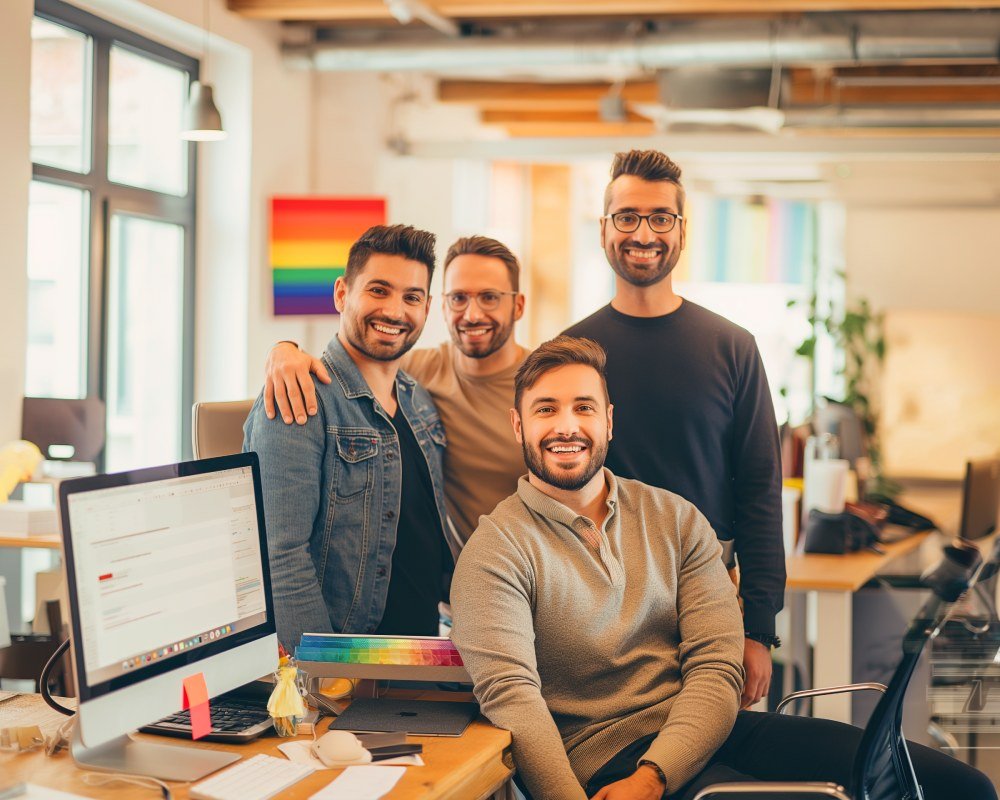
Government Enforcement Agencies
- Human Rights Commissions or Ombudspersons: Many countries have bodies to investigate and mediate discrimination claims. These entities can be crucial for LGBTQ plaintiffs who can’t afford private attorneys.
- Equality Tribunals or Courts: Specialized courts may handle discrimination or hate crime cases more efficiently, ensuring sensitive and knowledgeable adjudication.
Global Organizations
- ILGA (International Lesbian, Gay, Bisexual, Trans and Intersex Association): Advocates worldwide, compiles data on countries’ legal statuses, and lobbies for reform.
- Amnesty International and Human Rights Watch: Document abuses, pressuring governments to uphold international human rights standards.
- Local and Regional NGOs: Vital for grassroots advocacy, legal aid, and cultural outreach.
Enforcement Gaps and Future Directions
Even where robust laws exist, enforcement can be undermined by social prejudice, police bias, or fear among victims. Ongoing training for law enforcement and awareness campaigns remain critical. Additionally, changing legal language from “sexual orientation” to explicitly include “bisexual” can address erasure. Ultimately, protecting the rights of lesbian, gay, bisexual individuals requires a multi-faceted approach—legislative clarity, strong enforcement structures, and community empowerment to challenge discrimination whenever it arises.
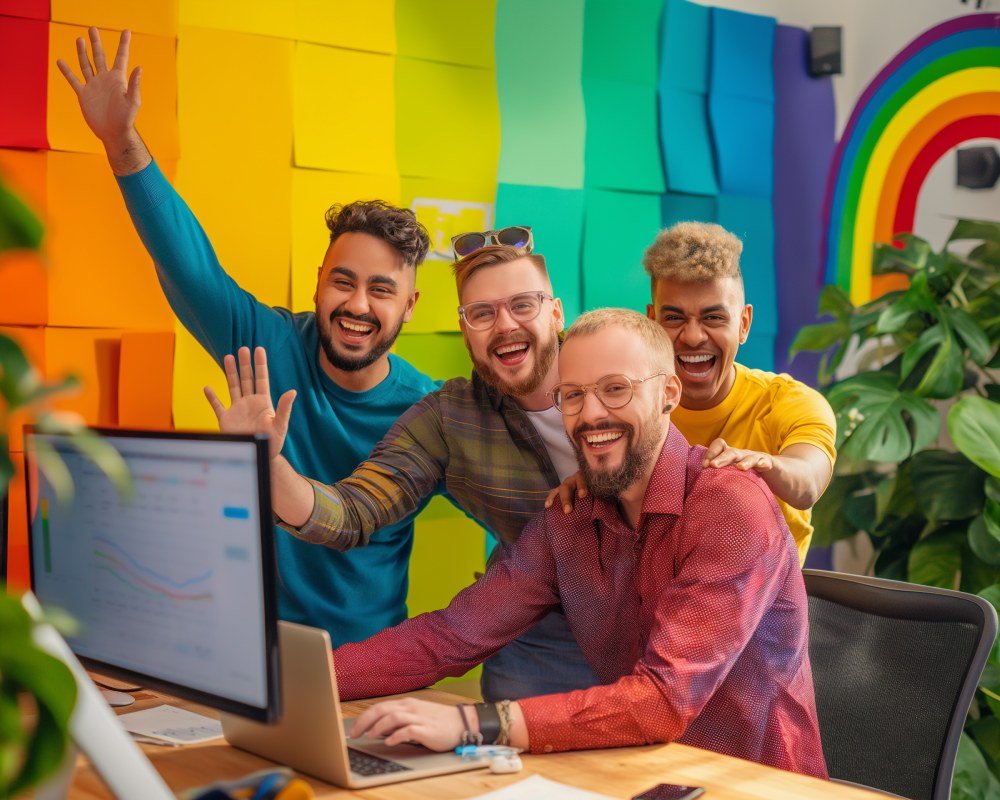
12. LGBTQ Rights in the United States
(Approx. 1,000 words, subdivided into 12.1, 12.2, 12.3 for detail)
Despite being a federal republic, the U.S. has a complex tapestry of laws affecting LGBTQ rights—some national in scope, others determined at the state or local level. While the 2015 Supreme Court ruling on marriage equality (Obergefell v. Hodges) became a landmark milestone, the fight for comprehensive protections is ongoing.
12.1 Federal Laws and Protections
- Civil Rights Act Interpretations: Title VII of the Civil Rights Act of 1964 prohibits sex discrimination in employment. In a historic 2020 decision (Bostock v. Clayton County), the Supreme Court ruled that discrimination based on sexual orientation or gender identity is inherently a form of sex discrimination. This effectively extends federal employment protections to LGBTQ individuals.
- Hate Crimes Prevention Act: The Matthew Shepard and James Byrd Jr. Hate Crimes Prevention Act (2009) expanded the definition of hate crimes to include those motivated by sexual orientation or gender identity. This law allows federal authorities to aid in local investigations or prosecute crimes when local governments fail to do so adequately.
- Military Service: The long-standing “Don’t Ask, Don’t Tell” policy was repealed in 2011, allowing gay, lesbian, and bisexual people to serve openly in the military. However, trans service members have faced fluctuating policies under different administrations. As of 2021, bans have been lifted again, permitting transgender people to serve.
12.2 State-by-State Variations
Despite federal precedents, states wield significant power.
- Non-Discrimination Statutes: Roughly half the states have explicit laws banning workplace discrimination based on sexual orientation and gender identity. Others rely on broader interpretations or have no statewide protections, leaving city ordinances to fill gaps.
- Public Accommodations: Some states ensure comprehensive coverage in restaurants, hotels, and other public-facing businesses, while others are silent, creating patchwork protections.
- Conversion Therapy Bans: Conversion therapy—attempting to change someone’s orientation or identity—remains legal in many states. Over 20 states plus D.C. ban it for minors, but enforcement and scope differ.
- “Religious Freedom” Exemptions: Certain states have passed or attempted to pass laws allowing individuals or businesses to deny services to LGBTQ people on religious grounds. Critics say these effectively sanction discrimination.
12.3 Notable Court Cases and Milestones
- Lawrence v. Texas (2003)
This Supreme Court ruling invalidated state sodomy laws nationwide, affirming the right of consenting adults to privacy in intimate relationships. Previously, many states criminalized same-sex acts, even between consenting adults in private. - United States v. Windsor (2013)
Struck down the federal Defense of Marriage Act (DOMA) provision defining marriage as only between a man and a woman. This opened the door for federal recognition of same-sex marriages performed in states that had legalized them. - Obergefell v. Hodges (2015)
A watershed moment: The Supreme Court legalized same-sex marriage nationwide, recognizing that denying marriage licenses to same-sex couples was unconstitutional under the 14th Amendment. - Bostock v. Clayton County (2020)
Clarified that Title VII of the Civil Rights Act includes LGBTQ workers, effectively outlawing discrimination based on sexual orientation or gender identity in employment. - Transgender Rights Cases
Multiple lower-court rulings addressed whether Title IX (preventing sex discrimination in education) covers trans students’ access to bathrooms matching their gender identity. While some courts affirmed trans students’ rights, the lack of a definitive Supreme Court decision leaves the issue partially unsettled.
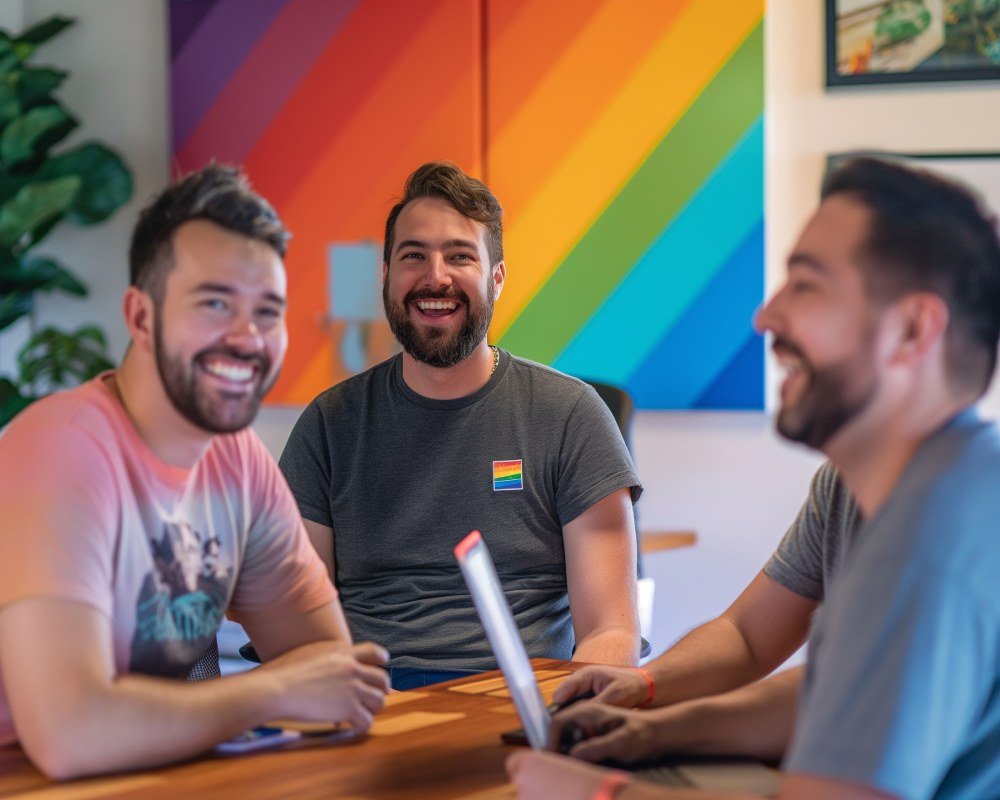
Current Debates and Future Prospects
Across the U.S., disputes persist over trans healthcare, especially for minors. Some states have introduced bills restricting gender-affirming treatments or school restroom access for trans youth. On the other hand, municipal protections continue to grow—cities in more conservative states might enact inclusive ordinances that override state hostility. Meanwhile, activists push for a comprehensive federal equality act that would fully codify protections in housing, education, and public services, preempting state-level gaps.
Conclusion: A Diverse Landscape
LGBTQ rights in the United States have advanced significantly, from decriminalizing same-sex intimacy to recognizing gay marriages. Yet, the federal system’s patchwork nature fuels disparities. A trans individual in one state may have robust rights; in another, they might face rampant discrimination. This dynamic environment necessitates constant vigilance, grassroots organization, and legal advocacy to ensure that national precedents translate into on-the-ground equality for all.
13. Comparative Table: Same-Sex Marriage Laws Around the World
Same-sex marriage recognition has become a touchstone for gay rights in the 21st century. Below is a comparative table highlighting some key countries/regions that have legalized same-sex marriage, versus those that offer alternative frameworks or maintain prohibitions.
| Country/Region | Legal Status of Same-Sex Marriage | Alternatives (Civil Unions, etc.) | Notable Year/Case |
|---|---|---|---|
| Netherlands | Fully legal since 2001; first country to do so. | N/A | 2001: The Netherlands pioneers full marriage equality. |
| Canada | Legal nationwide since 2005. | Some provinces had civil unions prior. | 2005: Civil Marriage Act makes marriage federal. |
| South Africa | Legal since 2006, under Civil Union Act. | Civil Union Act = Marriage or Union | Landmark Constitutional Court ruling mandated equality. |
| Argentina | Legal since 2010. | Previously, city-level unions in BsAs | First Latin American country to legalize same-sex marriage |
| United States | Legal nationwide since 2015 (Obergefell v. Hodges). | State-level civil unions, domestic partnerships pre-2015. | Patchwork of earlier state-level rulings. |
| Australia | Legal since 2017 via postal survey + parliamentary vote. | Some states had civil unions. | A national referendum-like survey preceded legislation. |
| Taiwan | Legal since 2019, first in Asia. | N/A | Constitutional Court demanded legislative action. |
| Mexico | Legal in several states + capital; others require court orders. | Some states offer civil unions. | A patchwork approach, with supreme court favorable to equality. |
| Germany | Legal since 2017. | Civil partnerships recognized since 2001. | “Ehe für alle” (Marriage for all) legislation passed. |
| France | Legal since 2013 (Marriage for All law). | Civil solidarity pacts (PACS) since 1999. | 2013 law recognized full equality. |
| Poland | Prohibited; constitutional ban on same-sex marriage. | N/A | No national civil union; local activism ongoing. |
| Russia | Constitution redefines marriage as man-woman (2020). | N/A | Civil unions not recognized; official hostility. |
| Kenya | Illegal to have same-sex relations. | N/A, same-sex acts criminalized. | 2019 High Court upheld ban on homosexual conduct. |
| Saudi Arabia | Same-sex acts punishable by death under Sharia law. | N/A | Extremely harsh environment for LGBTQ. |
Observations and Trends
- Global Variance: Western Europe and parts of the Americas lead in marriage equality. Africa and the Middle East largely resist recognition, with some states retaining colonial-era sodomy laws or even imposing capital punishment.
- Incremental Approach: Many countries introduced civil unions or domestic partnerships before moving to full marriage rights. In some cases, separate but “almost equal” frameworks persist, though activists argue these create second-class citizenship.
- Regional Courts: Supranational bodies like the European Court of Human Rights influence policy, pressuring member states to adopt or expand same-sex marriage or at least some legal framework acknowledging same-sex couples.
Legalizing same-sex marriage doesn’t automatically end discrimination, but it signals a society’s acceptance of gay relationships as legitimate and deserving of the same protections as heterosexual ones. The broader LGBTQ rights movement views marriage equality as one component—others include anti-discrimination, trans healthcare, and so forth. Still, as the table illustrates, attitudes and laws regarding same-sex marriage can serve as a bellwether for a nation’s overall posture towards queer communities.
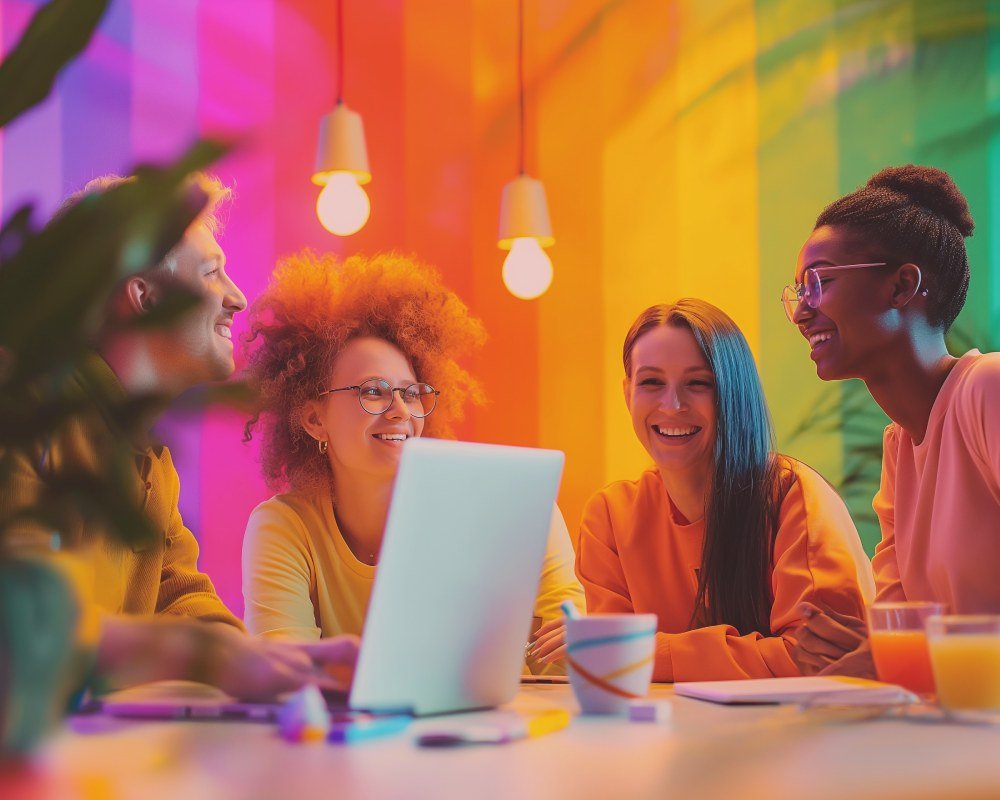
14. Gay Rights: Milestones, Setbacks, and Evolving Strategies
While the term “gay rights” initially focused on gay men, it also often serves as a broader shorthand for LGBTQ equality. Over the decades, gay rights have advanced through notable milestones, though setbacks and evolving strategies characterize the continuing struggle.
Milestones
- Decriminalization: From 1967’s Sexual Offences Act in England and Wales to recent changes in India (2018), laws criminalizing gay sexual acts have been repealed in numerous countries. This fundamental shift allowed gay communities to emerge from hiding, forming the bedrock of modern activism.
- Pride Movement: Pride parades began as commemorations of the Stonewall Riots, evolving into global celebrations of identity. They highlight visibility, community solidarity, and political demands like marriage equality and anti-bullying initiatives.
- HIV/AIDS Activism: During the AIDS crisis, gay communities organized for healthcare, research funding, and destigmatization. Groups like ACT UP forced governments to respond, saving countless lives.
- Marriage Equality: Achieving legal recognition of same-sex marriage in multiple jurisdictions stands as one of the highest-profile successes, representing symbolic and material gains (tax benefits, healthcare decisions, etc.).
Setbacks and Ongoing Challenges
- Religious Objections: Some faith-based organizations remain stridently opposed to gay rights, framing them as an attack on “traditional values.” Legislation granting “religious exemptions” for services can undermine anti-discrimination laws.
- Hate Crimes and Bullying: Even where laws protect gay individuals, social stigmas persist. Bullying in schools, workplace harassment, and physical assaults remain significant issues.
- Global Gaps: Roughly 70 countries still criminalize homosexuality. In several, punishment can be life imprisonment or the death penalty, reflecting a stark contrast with regions championing progressive reforms.
- Internal Community Tensions: Sometimes, “gay” activism overshadows lesbians, bisexuals, or trans folks, leading to critiques that mainstream movements center cisgender gay men. Intersectional approaches aim to address these imbalances.
Evolving Strategies
- Legal Action: Continued litigation forces courts to interpret constitutional guarantees of equality. Where legislative bodies stall, strategic lawsuits can catalyze reforms.
- Grassroots Organizing: Local groups anchor advocacy by supporting youth, providing HIV prevention, or challenging city ordinances that discriminate.
- Corporate Engagement: Pride sponsorships and internal diversity policies from major corporations boost visibility. Critics argue that rainbow capitalism can overshadow radical demands for systemic change, but supportive workplaces still matter.
- International Pressure: Human rights organizations track abuses, naming and shaming governments. Diplomatic pressure and foreign aid conditions sometimes push nations toward incremental reforms.
In summary, while gay rights have come a long way since the early days of clandestine meetings and criminalized identities, the journey remains unfinished. Cultural acceptance doesn’t always match legal advances, and victories in one region contrast sharply with persecution in another. By understanding these milestones, setbacks, and evolving strategies, advocates can refine approaches to build a more equitable world for all LGBTQ individuals.
15. Trans Rights: Identity Documents, Healthcare, and Social Policy
Building upon our earlier coverage of trans rights, this section delves deeper into three main pillars vital to transgender well-being: identity documents, healthcare, and social policy. These domains shape daily life for trans individuals, influencing everything from employment prospects to physical safety.

1. Identity Documents
- Legal Gender Recognition: The ability to change one’s gender marker (and sometimes name) on passports, driver’s licenses, and birth certificates is critical for avoiding harassment or being outed in routine transactions.
- Self-Declaration vs. Medical Gatekeeping: Some countries, like Argentina, embrace a “self-ID” model requiring minimal bureaucratic procedures. Others demand extensive medical diagnoses, psychological evaluations, or even surgeries.
- Non-Binary Options: A growing number of jurisdictions permit an “X” or “other” designation for non-binary individuals. However, acceptance of these documents can vary internationally, causing travel complications.
2. Healthcare Access
- Gender-Affirming Treatments: Hormone replacement therapy (HRT) and surgeries (e.g., chest reconstruction, genital confirmation procedures) can be life-saving but remain financially inaccessible to many. Insurance coverage is patchy, and public healthcare systems may consider these elective rather than medically necessary.
- Mental Health Services: High rates of depression, anxiety, and suicide attempts in trans communities underscore the need for culturally competent, affirming mental health professionals. “Gatekeeping” approaches that pathologize trans identities can discourage individuals from seeking help.
- Informed Consent Model: Some clinics and activists advocate for informed consent protocols, allowing adults to access HRT without prolonged psychiatric scrutiny.
3. Social Policy
- Anti-Discrimination Laws: Protections in employment, housing, and education that explicitly name gender identity are crucial. Without them, trans individuals may be fired, evicted, or denied schooling with little legal recourse.
- Bathroom and Facility Access: “Bathroom bills” have become a flashpoint. Restricting trans people to bathrooms matching their birth-assigned sex leads to harassment and assault risks. Affirmative policies ensure trans patrons feel safe.
- School Policies: Support for trans youth includes respecting pronouns, permitting gender-appropriate clothing, and providing safe restroom access. Schools that lack such accommodations risk pushing trans students toward dropout or mental distress.
Advocacy and Future Directions
Organizations like Transgender Europe (TGEU) track laws across the continent, while the National Center for Transgender Equality in the U.S. offers policy toolkits. Global activism coordinates to standardize best practices, promoting the idea that trans identities need no external validation to be recognized. Meanwhile, critics of trans rights may claim concerns about women’s safety or children’s welfare—arguments refuted by consistent evidence that trans inclusion does not endanger cis individuals.
Ultimately, trans rights hinge on society’s willingness to expand definitions of gender, accept the fluidity of identity, and establish legal frameworks reflecting that understanding. Progress in one country or city can serve as a model, spurring advocacy elsewhere. By focusing on identity documents, healthcare access, and inclusive social policies, communities can advance from mere tolerance toward genuine respect for transgender people’s autonomy and dignity.
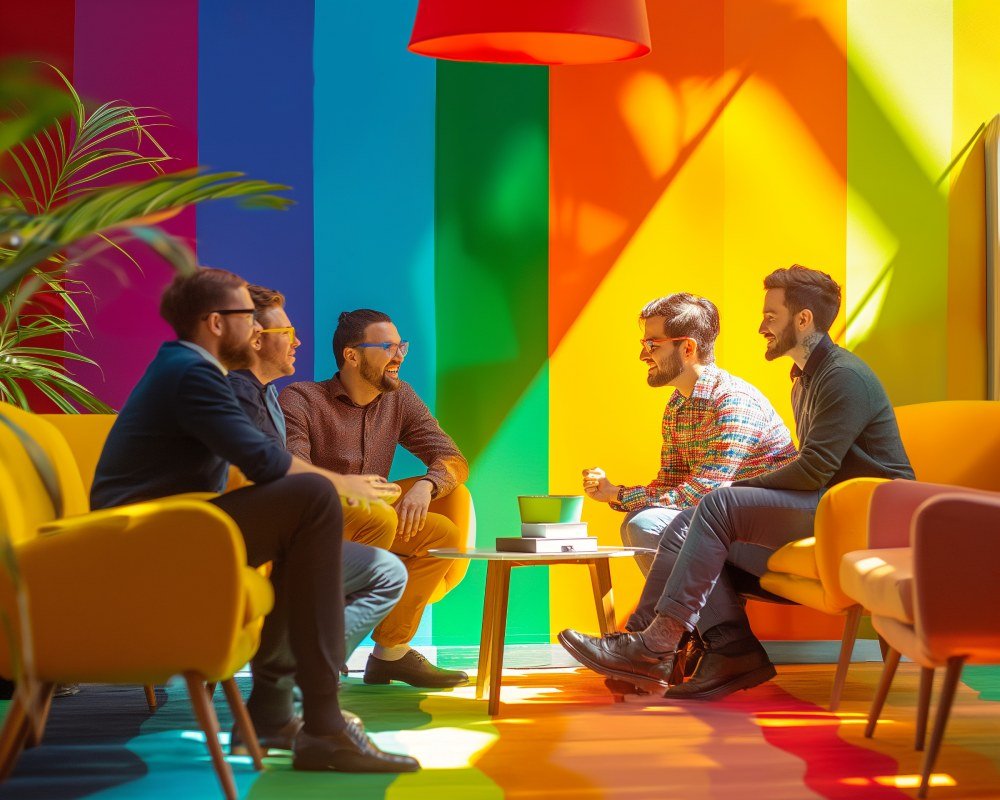
16. Intersectionality: Race, Class, Disability, and LGBTQ+ Communities
No exploration of LGBTQ rights is complete without discussing intersectionality, a concept introduced by Kimberlé Crenshaw to describe how overlapping identities—like race, class, and gender—compound discrimination. For queer people who are also part of other marginalized groups, injustice can multiply.
1. Race and LGBTQ+
- Racial Discrimination in LGBTQ Spaces: Queer communities are not immune to racism. LGBTQ persons of color may feel unwelcome in predominantly white spaces that center mainstream gay culture.
- Police Profiling: In the U.S., for instance, Black trans women face disproportionate police harassment and violence. Historical tensions between communities of color and law enforcement exacerbate mistrust.
- Cultural Contexts: In many non-Western societies, local traditions, religious interpretations, and the legacy of colonialism inform attitudes about sexuality and gender. Migrant or refugee LGBTQ folks navigate not only xenophobia but also potential rejection from diaspora communities.
2. Class and Economic Status
- Financial Barriers: Transition-related care, legal fees for name changes, or simply living in a more LGBTQ-friendly neighborhood often requires resources unavailable to low-income individuals.
- Employment and Poverty: Discrimination can lead to joblessness, eviction, or reliance on underground economies. This vulnerability is especially acute for trans sex workers or youth kicked out by families.
- Education Access: LGBTQ students from low-income backgrounds may have fewer protections in underfunded schools, lacking GSA (Gay-Straight Alliance) clubs or supportive counselors.
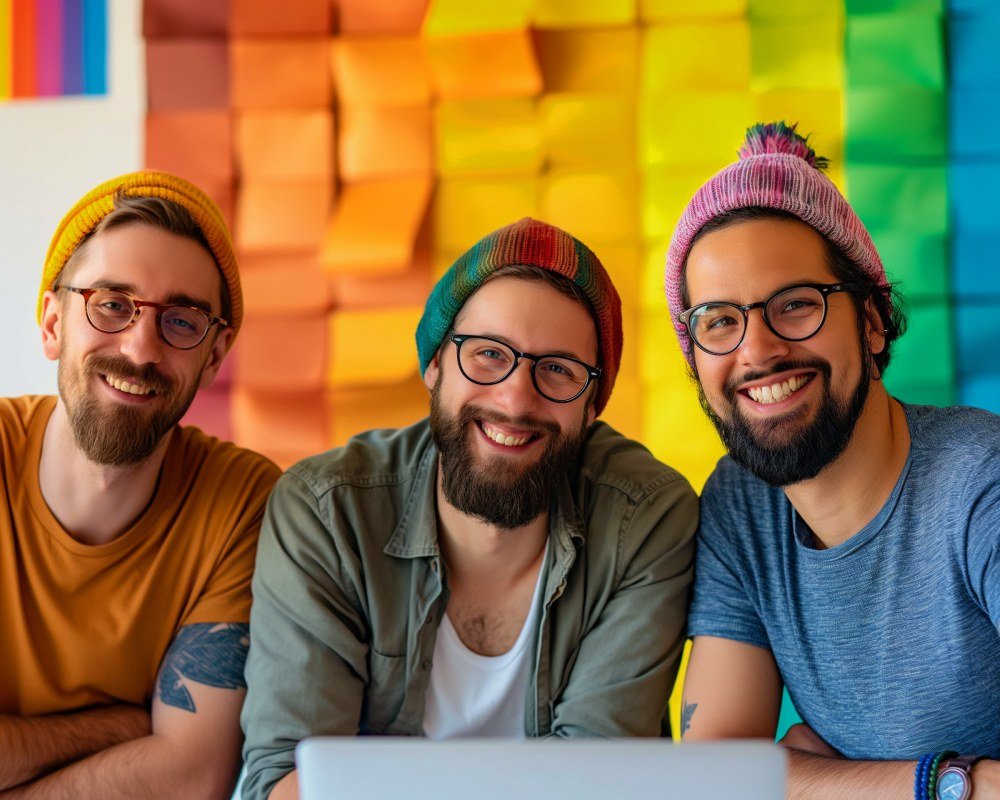
3. Disability and Neurodiversity
- Healthcare Discrimination: Disabled LGBTQ individuals might face prejudice within medical systems for both their disability and orientation/identity. Accessibility issues also plague LGBTQ events or safe spaces.
- Neurodiversity: Autistic or otherwise neurodivergent queer people can struggle to find inclusive, understanding environments. Social norms around “coming out” or “proper expression” may not accommodate their communication styles.
4. The Importance of Intersectional Advocacy
To address these layered challenges, movements must ensure gay rights, trans rights, and other LGBTQ concerns are integrated with broader anti-racist, feminist, disability rights, and economic justice work. Intersectional campaigns spotlight:
- Housing Security: Fighting gentrification in historically queer neighborhoods that displaces lower-income residents.
- Culturally Competent Healthcare: Training providers to recognize the interplay of race, disability, and queer identity.
- Inclusive Policy Language: Laws that name specific categories (race, gender identity, sexual orientation, disability, religion) deter singled-out interpretations that might exclude multi-marginalized individuals.
The Way Forward
Intersectionality reframes activism, advocating for a “both/and” mindset—both LGBTQ rights and anti-racism, both disability inclusivity and class-conscious policy. Embracing this approach transforms the LGBTQ rights movement from a single-issue campaign into a broader fight against systemic inequities. This synergy ensures no one is left behind, from the impoverished trans youth of color to the disabled lesbian requiring accessible community resources. Ultimately, intersectionality underscores that liberation is interconnected, binding fates across identities and forging unity in diversity.
17. The Global Perspective: Comparing Regions and Cultural Contexts
While the gay rights movement and broader LGBTQ rights activism have seen significant milestones in Western Europe, North America, and parts of Latin America, the global reality is far from uniform. Understanding regional variations is crucial for effective advocacy.
Europe
- Western Europe: Countries like the Netherlands, Sweden, and Spain are recognized for progressive policies, including marriage equality, anti-discrimination laws, and robust trans healthcare protocols. Nevertheless, far-right groups occasionally stoke backlash.
- Eastern Europe: Nations like Poland and Hungary exhibit rising homophobia, with “LGBT-Free Zones” or constitutional bans on same-sex unions. The European Union sometimes intervenes, but sovereignty issues complicate enforcement of LGBTQ protections.
The Americas
- North America: Canada and the U.S. both safeguard many LGBTQ rights, though rural or conservative pockets can be hostile. Mexico’s federal system yields patchy recognition of same-sex marriages, although the Supreme Court is pro-equality.
- Latin America: Argentina, Brazil, Colombia, and Uruguay champion progressive laws, but violence—especially against trans people—remains high. Machismo culture coexists with advanced legal frameworks, creating inconsistencies in everyday life.
Africa
- Criminalization: In much of sub-Saharan Africa, colonial-era sodomy laws persist. Countries like Nigeria and Uganda have introduced harsh penalties for same-sex acts.
- Positive Developments: South Africa stands out, granting marriage equality in 2006. However, societal homophobia remains rampant, and LGBTQ individuals can still face community-level violence.

Asia and the Middle East
- Legal Complexity: India decriminalized homosexuality in 2018, a landmark reversal of colonial law. Yet broad acceptance varies widely among states. In the Middle East, countries like Saudi Arabia and Iran maintain capital punishment for same-sex acts.
- Taiwan: Legalized same-sex marriage in 2019, the first in Asia. This could potentially influence neighboring regions, though cultural and political resistance remains.
Oceania
- Australia and New Zealand: Both recognize marriage equality and have relatively strong anti-discrimination laws. The indigenous Māori and Aboriginal communities also bring unique perspectives on gender and sexuality, historically recognized in some traditions.
- Pacific Islands: Legal frameworks vary; some smaller islands still follow conservative Christian doctrines banning same-sex relations.
Comparative Observations
- Colonial Legacy: Much of the global criminalization of homosexuality stems from British colonial laws. Former colonies that updated their penal codes often removed these statutes; others remain under their influence.
- Cultural vs. Legal: Even where laws are progressive, social acceptance can lag. Conversely, a few societies exhibit tolerant attitudes but lack formal legal protections, leaving individuals vulnerable to discrimination.
- Activist Networks: Cross-border collaborations, facilitated by digital technology, allow sharing of strategies and moral support. Global Pride events, ILGA’s country reports, and international solidarity campaigns amplify local efforts.
Recognizing these stark differences underscores that LGBTQ rights cannot be taken for granted; they’re continually contested and negotiated within cultural, political, and religious frameworks. Advocacy strategies must adapt to local realities, building alliances that respect both universal human rights ideals and specific cultural nuances.
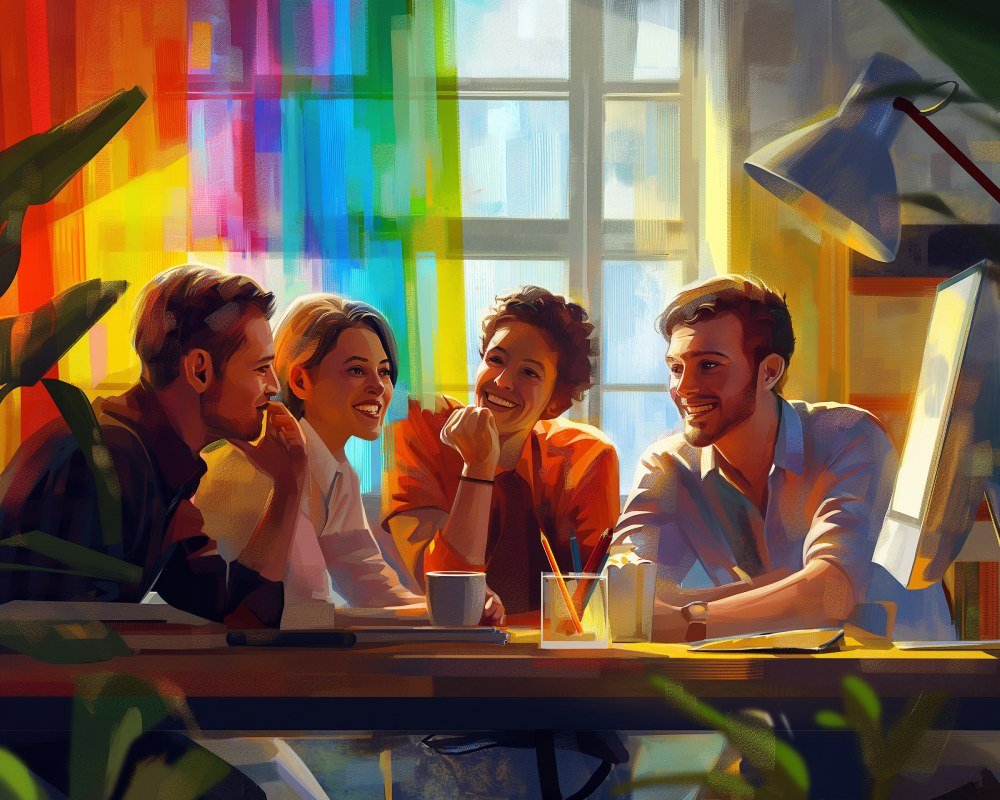
18. Ongoing Challenges and Future Directions
Despite remarkable achievements—from global awareness campaigns to legalized same-sex marriage in multiple countries—LGBTQ rights remain unevenly enforced and subject to backlash. Here are the most pressing challenges and likely future directions:
1. Anti-LGBTQ Political Movements
Right-wing populism in various countries exploits cultural anxieties, framing queer rights as a threat to family or religious values. This can manifest in “anti-gender ideology” rhetoric, restrictions on trans healthcare, or the rollback of anti-discrimination protections.
2. Youth Vulnerability
LGBTQ youth remain especially at risk of bullying, homelessness, and mental health struggles. Schools with insufficient support systems or conservative local policies may fail queer students. The online realm can provide safe havens but also opens youth to cyberbullying. Strengthening family acceptance programs and youth advocacy organizations is essential.
3. Intersectional Solidarity
As the movement grapples with critiques of being “too white” or not addressing economic inequality, intersectional activism is becoming a priority. Collaborations with Black Lives Matter or indigenous sovereignty movements, for instance, highlight the principle that no one is free unless all are free.

4. Health Disparities and Medical Research
- HIV/AIDS: Gay and bisexual men, particularly men of color, still face higher infection rates in some regions. Safe sex education, PrEP access, and destigmatization remain crucial.
- Trans Healthcare: Research on long-term effects of hormone therapy, inclusive mental health approaches, and expansions of insurance coverage shape the next frontier of equitable healthcare.
- Reproductive Rights: Surrogacy, IVF, and adoption for LGBTQ individuals intersect with broader fights about bodily autonomy, often complicated by religious or conservative policy.
5. Legal Reforms vs. Cultural Transformation
While legal wins matter, social acceptance typically lags. This gap demands ongoing public education, art, and media representation to shift hearts and minds. Pride festivals, queer film festivals, and mainstream representation (e.g., LGBTQ characters in popular TV shows) can accelerate cultural acceptance.
6. Digital Advocacy and Censorship
Social media has connected activists globally but also exposed them to online harassment. In authoritarian regimes, censorship and surveillance hamper LGBTQ organizing. Balancing the power of digital activism with digital security is vital.
Looking Ahead
In the next decade, the movement for LGBTQ rights may prioritize trans healthcare, non-binary recognition, and intersectional policymaking. Anti-bullying legislation, inclusive curricula, and broader acceptance of chosen families will expand. At the global level, diplomacy and human rights frameworks can continue pressuring nations that still criminalize or punish LGBTQ individuals. Nonetheless, a sustained push from grassroots organizations and allied communities remains critical to prevent backsliding.
Progress is rarely linear—successes can spark backlash, requiring vigilance. However, each stride in equality for lesbians, gay men, bisexual, trans, and queer folks sets the precedent that one’s orientation or gender identity should never determine whether they live freely and with dignity.
19. LGBT Rights – Conclusion
The sweeping scope of LGBTQ rights reflects a collective journey from persecution to increasing recognition of diverse identities and relationships. This article has traced the gay rights movement from early clandestine gatherings to global Pride celebrations, emphasized how LGBT Rights Are Human Rights, and spotlighted various sub-communities—lesbians, bisexuals, trans individuals, and those who claim the term “queer” to signify a broader, more radical approach.
We’ve also seen how LGBTQ rights in the United States present a microcosm of legal patchworks, set alongside nations where marriage equality and anti-discrimination laws are robust, versus those that still criminalize same-sex intimacy. The inclusion of comparative tables highlights the stark contrasts in legal statuses globally, with marriage equality, decriminalization, and hate crime protections symbolizing how far societies have come—or how far they still have to go.
Yet, ensuring gay rights, trans rights, and bisexual rights is not solely about legal reforms. Social acceptance, cultural transformation, and intersectional activism form the backbone of real change. Many individuals experience intersectional oppression, carrying the burdens of racism, ableism, or class discrimination alongside homophobia or transphobia. Addressing these overlapping forms of marginalization requires unity within the LGBTQ movement and alliances across social justice networks.
Challenges persist. Around the globe, conservative leaders leverage “traditional values” to push anti-LGBTQ laws. Bullying and violence remain significant threats, especially for youth or trans women of color. Healthcare barriers—from hormone treatments to HIV prevention—persist. Know Your Rights | LGBTQ Rights resources can empower individuals to navigate systems, yet legal knowledge alone doesn’t always shield people from bigotry in daily life.
Nevertheless, the trajectory is often one of increasing visibility, awareness, and legislative progress. The philanthropic, corporate, and non-profit sectors each contribute, funding community centers, sponsoring Pride events, and advancing workplace inclusion. The digital sphere offers new avenues for mobilization, allowing campaigns to go viral and forging solidarity beyond physical borders.
Where do we go from here? The future likely holds further expansions of legal recognition—such as non-binary gender options, expansions of adoption rights, and explicit incorporation of LGBTQ protections into hate crime and anti-discrimination laws. On a global scale, bodies like the United Nations and regional organizations continue to pressure lagging states. Grassroots activists will also remain at the forefront, safeguarding local communities while championing radical visions for societal change.
In essence, LGBT Rights are not a fixed endpoint but an ongoing process. They encompass evolving definitions of orientation and gender, new frontiers of legal advocacy, and ever-widening circles of solidarity. By continuing to educate ourselves, support one another, and demand accountability from institutions, we inch closer to a world where no one’s identity—whether lesbian, gay, bisexual, transgender, queer, or beyond—becomes grounds for discrimination, violence, or exclusion. Instead, it becomes recognized, celebrated, and protected as an integral dimension of human freedom and dignity.
Advertisement · Scroll to continue

More Recommended
Best LGBTQ+ Food Festivals for Travelers
Best LGBTQ+ Food Festivals for Travelers – When it comes to blending culture, food, and [...]
Are Most Men Naturally Bisexual?
Are Most Men Naturally Bisexual? Understanding Male Sexual Fluidity The question, “Are most men naturally [...]
LGBTQ-Friendly Neighborhoods in Las Vegas
LGBTQ-Friendly Neighborhoods in Las Vegas: A Comprehensive Guide Las Vegas is renowned for its glitz, [...]
Why Do Some Gays Prefer to Stay Closeted?
Why Do Some Gays Prefer to Stay Closeted? – Navigating the complexities of identity is [...]
How to Cope with Coming Out Later in Life
How to Cope with Coming Out Later in Life – Navigating the journey of coming [...]
Beyond Labels: The Business Success Stories of Lesbian Entrepreneurs in Marketing
Beyond Labels: The Business Success Stories of Lesbian Entrepreneurs in Marketing As the LGBTQ community [...]
Inside the World of Gay Marketing: How LGBTQ+ Agencies are Shaping Advertising
Inside the World of Gay Marketing: How LGBTQ+ Agencies are Shaping Advertising The world of [...]
Marketing to the LGBTQ+ Community: Strategies for Success from Gay-Owned Businesses
Marketing to the LGBTQ+ Community: Strategies for Success from Gay-Owned Businesses – Marketing to the [...]
Why Do Gays Face Discrimination at Work?
Why Do Gays Face Discrimination at Work? – Discrimination against the LGBTQ+ community, including gay, [...]